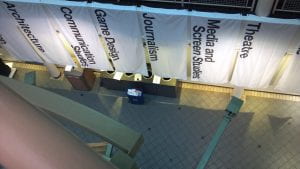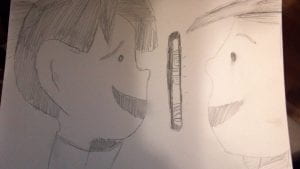Rules:
-WASD movement keys
-Spacebar jump
-Mouse to click Restart and Quit(buttons are buggy on player death)
Artist Statement:
I struggled coming up with an idea at first for an underrepresented topic within games. I then saw my friend playing the Call of Duty Black Ops 2 campaign, and saw how his decisions throughout the game, had no effect on the end. So my game is an abstract way of representing how the decisions we make throughout a game, and the path we take, mean nothing in the end. They are just trial and tribulations, and can be seen throughout all games in a bigger sense as just events.
My biggest inspirations came from class, where I saw the video on the Jejune Institute. In the commentary, people were saying how afterwards they looked at the city they lived in for years differently. The other inspiration came from the game, The Graveyard, where an elderly lady walks across a pathway in a morgue, and sits on a bench. The elderly lady’s life was randomized so, she could pass away while walking down the path. Also, I liked the style of how the game was always the same setting, and same action, so the end is always constant. So my goal, taking away from these games, was to open the players eyes towards my objective about choices and effects of decisions within games.
So I created a little character within a platformer, and a repetitive environment to show represent games as a whole. I then used spikes, to represent the events that players, and the choices they make each time. I randomized whether the spike made the player lose a life or not if they touched it. I then randomized the player’s life on each round played, so that the character might reach the end sooner. Originally, my first playtest was a different game: a 3D survival style, where the player was in a boxed environment, and could just walk around, while their health dwindled over time. After playtesting I felt that game wasn’t fitting towards my goal. That’s why I thought a platformer would work better. The level was designed for the player to keep trekking down, while their health could be lost by hitting spikes, of varying sizes and quantities. The end of the level is just empty so the player falls to oblivion. The player always has the option to restart or quit the game whenever.
After looking back at this semester, I can say I learned a lot of ways expressing myself through art, integrated into games. My favorite game that I made in the class, had to be our very first one: a score, the person must communicate with a stranger using only their phone. The objective was to make the player uncomfortable.
The Game:





